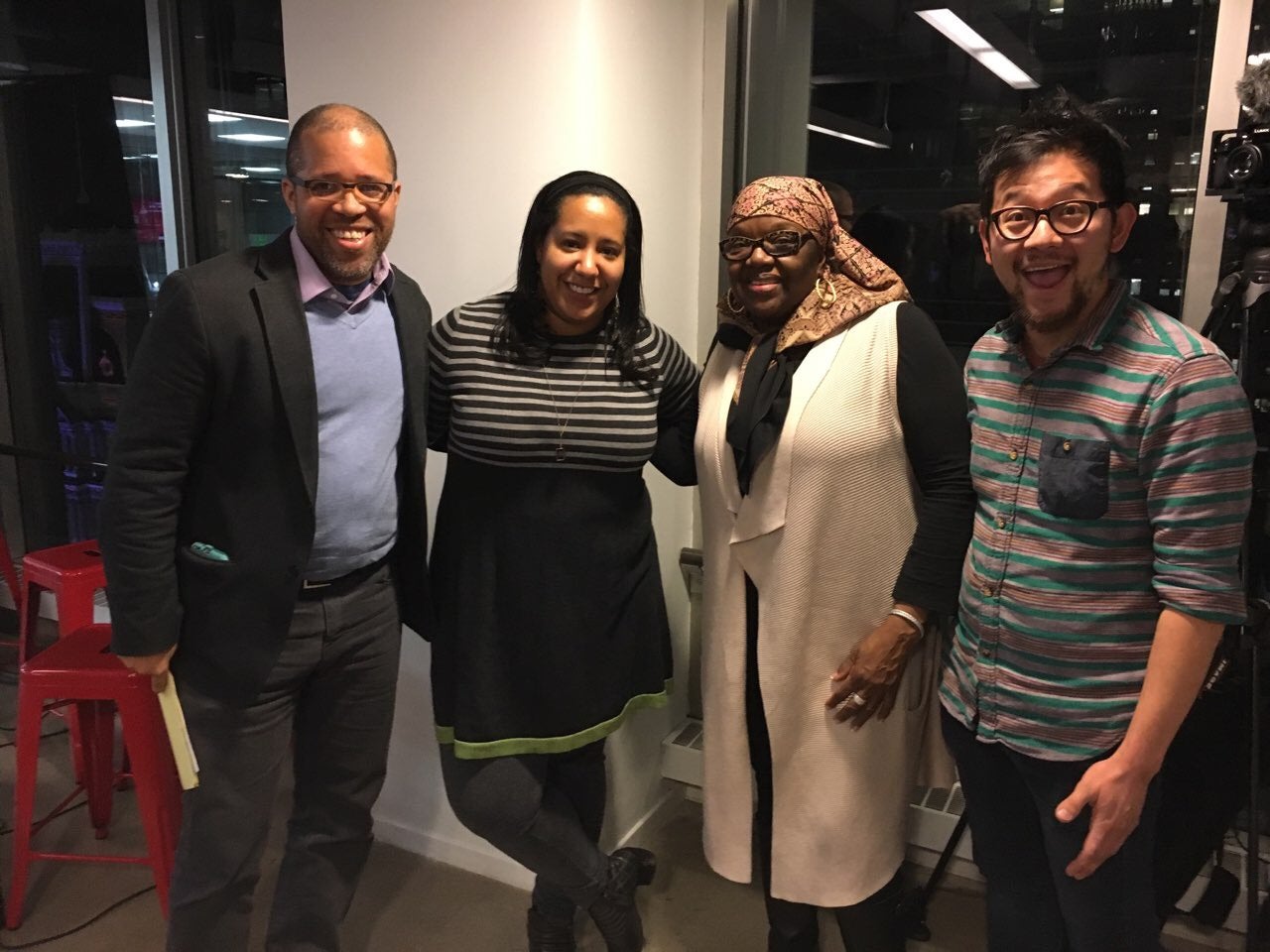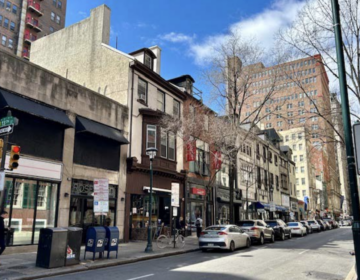Race + Design: Weaving stories, empathy, and empirical observation to create inclusive spaces

Philadelphia has invested significantly in improving its public spaces for all citizens to enjoy. The benefits of a vibrant public realm and civic commons are clear: spaces to come together, get fresh air, repose alone, protest, or play. But are these spaces welcoming and accessible to everyone? Who are they designed for? Who are they designed by?
In December, Urban Consulate, PlanPhilly, PhilaNOMA-Philadelphia Chapter of NOMA, Community Design Collaborative, and the Philadelphia Association of Community Development Corporations hosted a panel discussion on the issues and nuances surrounding race and public space. Here, panelist and architect Ian Smith, of Ian Smith Design Group LLC, reflects on the discussion with PlanPhilly and elaborates on some of the themes discussed. (Comments have been edited and condensed.)
—
PlanPhilly: One of the takeaways from December’s panel for you was `the need for more designers of color to interpret the codes of cultures [stories] that most deserve these equitable interventions.’ Could you explain that to someone who is new to the conversation? Why is that important?
Ian Smith: The panel helped me stumble upon a refreshing perspective on the value of the architect. Much like actors, detectives, or forensic investigators, architects are trained to imagine what it is like to walk in another person’s shoes. Interpreting a user’s experience by walking through a few sequenced moments is directly proportional to the quality of empathy (meaning imagination) that is offered to the determination of a design outcome. All practitioners have a unique set of life experiences from which to `walk in another person’s shoes.’ If more people of color were doing the interpreting, these codes might be more thoroughly translated into results that are more equitable.
How much does race play a role in your work, whether you want it to or not?
Race plays a role in many, if not all, of my decisions, but not In the way one might expect. Typically, I am trying to avoid the thinking of what might or might not be offered to me because I am a black architect. What happens, though, is that I often overcompensate … in my presentation of who I am, in subtle, disguised ways, or outright: I know that mentioning that I went to Rhode Island School of Design and Yale University improves my rank as a desirable acquaintance. I may overcompensate by intentionally using big words to break expectations. Sometimes, I say that I am sorry, even when it is not necessary, to provide a pretension of submission. Sometimes, I will don a bad foreign accent, or deliver a vocal inflection all in order to diffuse what is going on in my mind about how I might be perceived: black; not too black; not black at all. I think that my psychology has been tainted to align with the stories of inferiority. Even though in my personal truth … I do not feel inferior, I sometimes battle with the thinking, as though I might have been trained to believe that I might be inferior. Perhaps subconsciously consuming what the popular media has projected over a 20-to-30-year period is that one should expect discrimination. Thus, I look for it as often as I might hope to be oblivious to direct discrimination.
`Ideas can be flexible in order to be inclusive.’ Can you share an example of how you create options or scenarios that can be ‘flexed’?
I think we should often consider the room to which the content is playing. I try to remind myself of the Golden Rule and read the crowd and be in the room. I like to tell an open-ended story, like a moment in the day of a fictional 14-year-old female who takes an early Saturday morning stroll in a city neighborhood she barely knows. She engages with her environment like an objective scientist, accepting familiar … moments of the streetlights going to sleep and the trash-truck engines rattling the roll-down security doors. This beginning framework opens the work to encourage additional stories to supplement what is celebrated, and what can be celebrated even more. It’s often that we, as designers, are more hopeful than determined, which may not be as helpful. However, I have rarely been involved in a design project that didn’t already celebrate something spectacular that could be improved upon. Typically, when I am considering a design solution that is general to all, but often delivered with the perspective of an affluent user group, I like to present an imagined experience of how an outsider, patient, visitor, might interact with the solution, (sit, walk, talk, jump, yell, crawl, sprawl) in order to momentarily suppress the perspective of an affluent user group to arrive at a deeper state of understanding.
Every place and every community is different. You have shared that you believe the `the most inspiring approach is a celebration of connection between the participants and the receiver.’ As a designer, how do you approach each site, and what is your process with the communities or neighborhoods surrounding a project?
When architects are most impressionable within the early years of the profession, they are trained to subdue and ultimately understand one’s own subjective position. Thus, when I approach each site I am very conscious of my own actions. I observe the people that are present. I look for patterns of behavior that are familiar. I intentionally make eye contact with those who are close enough to make the exchange, and I may even reflect actions that I have gathered. If all else fails, I smile, in order to get one in return. As I am receiving these coded environmental data, I believe I am also receiving micro-impressions of how people value the focus location. My hope is to walk away with a memory or a recorded note of what may already be well functioning. Sometimes, it is an observation that is unexpected but should not be unexpected. An example that I recently remember is a group of aging black men and one or two black women walking from their yoga session with their yoga mats tucked under their arms. It is not often that one sees that, but why can’t one expect to see that in North Philly?
How do empathy, storytelling, and empirical observation fit together?
I was recently listening to WHYY where I heard empathy defined as a skill set of imagination. This reminded me of one of my first epiphanies where I went to challenge the concept of blackness in North America. I looked hard at empathy to imagine what it would be like to be a slave owner. I eventually arrived at considering what it would be like to have my authority challenged. The simple thought was fear and humility of losing power. The afterthoughts were fear multiplied. I realize this fear felt very similar to a game I played often when I was young, “King of the Mountain.” To this day, I remember the drive to obtain control over [the peak of] this small pile of excavated dirt from my formidable friends and, for a brief moment, my competition. However after securing this perched status, I felt incredibly vulnerable to many different possible outcomes that were not anticipated prior to gaining the control over the high post. In this case, I came to a conclusion that to stay in this location, I would need to either play in an aggressive manner or prepare to relinquish the throne.
How do you know when you’ve reached consensus? Can you give an example of what that looks/feels like?
When the people in the room smile, and it feels like everyone’s defenses have come down. There is a general expression of either accomplishing something as a group, or seeing the clarity of a well-founded position. Perhaps the consensus is experiencing that the participants in the room are there to gain similar insight or give in similar ways.
How can we use design as a communication tool?
When I discuss design, I always revert back to the Latin root “desegnare” … basically, to draw. Thus, when I think of drawing as a communication tool, I often call upon what the next derivative of drawing becomes: a presentation of something observed or recorded; a re-presentation. Which refers to taking something from the physical world and presenting the interpretation of its essence. Design typically communicates the will or the decision to act upon, perhaps meaning a response. Design has definitely taken some cues from science, because early on in science one needed to record one’s findings in order to have another individual impartially replicate the findings, or just remember what one did last so as not to have to start completely over at the beginning again. Thus, if one practices design, one may find that design is more a process of arriving at a solution through comparison and contrasting variables. And furthermore, design as a tool would be used to communicate willful effort in working toward a solution that resolves from questioning. I have always found that seeing the effort behind the result communicates a way to empathize with the conception and the resolve. It’s the product without the process that throws perception off balance.
There are some who argue that cities today are no longer segregated, and that ‘race has nothing to do with’ designing or using spaces. What would you say to that? How could two people have two different experiences in the same space? How does design play a role in determining that experience?
Wrong, wrong, all night long: Boston, Washington, D.C., Philadelphia, Atlanta, Reading, Pa., Cincinnati, Louisville, Ky., Providence, R.I., New Haven, Conn., to name a few of the places I spent some time in. We have a pretty good sense that real estate money follows and evades race. We might call it a trusted return on an investment, but on a broader perspective trust follows comfort, and many decisions of comfort are emotional determinations based on assembled prior repetitious experiences.
For the non-designers, what can we do to create safe places in built spaces? What power do we have?
We have very keen observers in the public space, with either phones or just being nosy. As we grow, we can discuss the items that generally gain trust around strangers. Entering into any cultural space requires learning the basics. Most of us are taught this with the Golden Rule. It is the erosion of this first step into the public realm that begins to reward cynicism over politeness. With the revived presence of a great steward of this practice [back in] the public eye recently, I am generally humbled when I revisit his words, “I feel so strongly that deep and simple is far more essential than shallow and complex:” Mister Rogers.
There are a couple things I try to practice every day I face the strange public. I try to make someone’s day. In the times that this happens, I have usually struck up a conversation to inquire about how one is doing, or to see if I can help.
WHYY is your source for fact-based, in-depth journalism and information. As a nonprofit organization, we rely on financial support from readers like you. Please give today.






